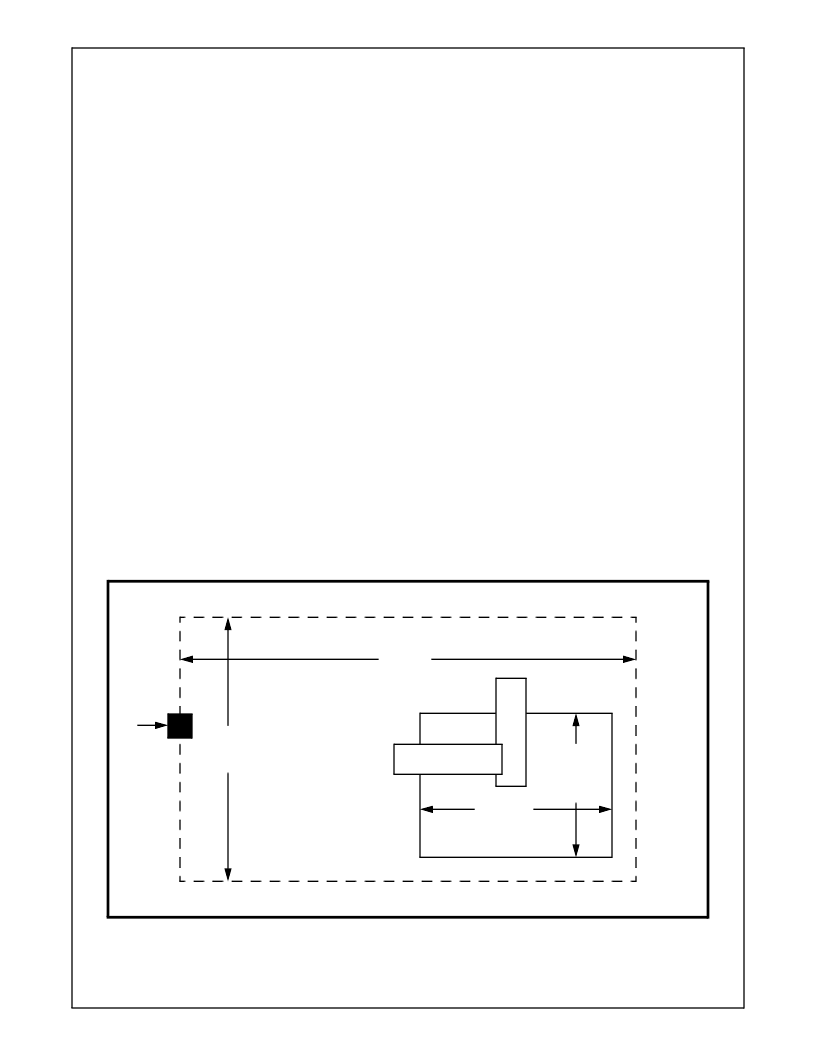- 您現(xiàn)在的位置:買賣IC網(wǎng) > PDF目錄376338 > SC2200UFH-233 (National Semiconductor Corporation) Thin Client On a Chip PDF資料下載
參數(shù)資料
| 型號: | SC2200UFH-233 |
| 廠商: | National Semiconductor Corporation |
| 元件分類: | 微處理器 |
| 英文描述: | Thin Client On a Chip |
| 中文描述: | 瘦客戶機片上 |
| 文件頁數(shù): | 328/433頁 |
| 文件大小: | 3255K |
| 代理商: | SC2200UFH-233 |
第1頁第2頁第3頁第4頁第5頁第6頁第7頁第8頁第9頁第10頁第11頁第12頁第13頁第14頁第15頁第16頁第17頁第18頁第19頁第20頁第21頁第22頁第23頁第24頁第25頁第26頁第27頁第28頁第29頁第30頁第31頁第32頁第33頁第34頁第35頁第36頁第37頁第38頁第39頁第40頁第41頁第42頁第43頁第44頁第45頁第46頁第47頁第48頁第49頁第50頁第51頁第52頁第53頁第54頁第55頁第56頁第57頁第58頁第59頁第60頁第61頁第62頁第63頁第64頁第65頁第66頁第67頁第68頁第69頁第70頁第71頁第72頁第73頁第74頁第75頁第76頁第77頁第78頁第79頁第80頁第81頁第82頁第83頁第84頁第85頁第86頁第87頁第88頁第89頁第90頁第91頁第92頁第93頁第94頁第95頁第96頁第97頁第98頁第99頁第100頁第101頁第102頁第103頁第104頁第105頁第106頁第107頁第108頁第109頁第110頁第111頁第112頁第113頁第114頁第115頁第116頁第117頁第118頁第119頁第120頁第121頁第122頁第123頁第124頁第125頁第126頁第127頁第128頁第129頁第130頁第131頁第132頁第133頁第134頁第135頁第136頁第137頁第138頁第139頁第140頁第141頁第142頁第143頁第144頁第145頁第146頁第147頁第148頁第149頁第150頁第151頁第152頁第153頁第154頁第155頁第156頁第157頁第158頁第159頁第160頁第161頁第162頁第163頁第164頁第165頁第166頁第167頁第168頁第169頁第170頁第171頁第172頁第173頁第174頁第175頁第176頁第177頁第178頁第179頁第180頁第181頁第182頁第183頁第184頁第185頁第186頁第187頁第188頁第189頁第190頁第191頁第192頁第193頁第194頁第195頁第196頁第197頁第198頁第199頁第200頁第201頁第202頁第203頁第204頁第205頁第206頁第207頁第208頁第209頁第210頁第211頁第212頁第213頁第214頁第215頁第216頁第217頁第218頁第219頁第220頁第221頁第222頁第223頁第224頁第225頁第226頁第227頁第228頁第229頁第230頁第231頁第232頁第233頁第234頁第235頁第236頁第237頁第238頁第239頁第240頁第241頁第242頁第243頁第244頁第245頁第246頁第247頁第248頁第249頁第250頁第251頁第252頁第253頁第254頁第255頁第256頁第257頁第258頁第259頁第260頁第261頁第262頁第263頁第264頁第265頁第266頁第267頁第268頁第269頁第270頁第271頁第272頁第273頁第274頁第275頁第276頁第277頁第278頁第279頁第280頁第281頁第282頁第283頁第284頁第285頁第286頁第287頁第288頁第289頁第290頁第291頁第292頁第293頁第294頁第295頁第296頁第297頁第298頁第299頁第300頁第301頁第302頁第303頁第304頁第305頁第306頁第307頁第308頁第309頁第310頁第311頁第312頁第313頁第314頁第315頁第316頁第317頁第318頁第319頁第320頁第321頁第322頁第323頁第324頁第325頁第326頁第327頁當(dāng)前第328頁第329頁第330頁第331頁第332頁第333頁第334頁第335頁第336頁第337頁第338頁第339頁第340頁第341頁第342頁第343頁第344頁第345頁第346頁第347頁第348頁第349頁第350頁第351頁第352頁第353頁第354頁第355頁第356頁第357頁第358頁第359頁第360頁第361頁第362頁第363頁第364頁第365頁第366頁第367頁第368頁第369頁第370頁第371頁第372頁第373頁第374頁第375頁第376頁第377頁第378頁第379頁第380頁第381頁第382頁第383頁第384頁第385頁第386頁第387頁第388頁第389頁第390頁第391頁第392頁第393頁第394頁第395頁第396頁第397頁第398頁第399頁第400頁第401頁第402頁第403頁第404頁第405頁第406頁第407頁第408頁第409頁第410頁第411頁第412頁第413頁第414頁第415頁第416頁第417頁第418頁第419頁第420頁第421頁第422頁第423頁第424頁第425頁第426頁第427頁第428頁第429頁第430頁第431頁第432頁第433頁

www.national.com
328
Revision 3.0
G
Video Processor Module
(Continued)
6.2.3.4
The Mixer/Blender takes each pixel of the graphics and
video data streams and mixes or blends them together.
Mixing is simply choosing the graphics pixel or the video
pixel. Blending takes a percentage of a graphics pixel
(Alpha_value * Graphics_pixel_value) and percentage of
the video pixel (1 - Alpha_Value * Video_pixel_value) and
adds them together. The percentages of each add up to
100%. The actual formula is:
Color/Chroma Key and Mixer/Blender
Blended Pixel = (Alpha_value * Graphics_pixel_value) /
256 + ((256 – Alpha_value) * Video_pixel_value) / 256
Where: Alpha_value = 0 to 255
Mixing and blending are supported simultaneously for
every rendered frame, however, each pixel can only be
mixed or blended. The mix or blend question is decided by
the pixel position, whether video is overlaid on the graphics
or visa versa (GFX_INS_VIDEO, F4BAR0+Memory Offset
4Ch[8]), and several programmed “windows”. Figure 6-11
illustrates and example frame.
Graphics Window
The graphics window is defined in the GX1 module’s dis-
play controller and is always the full screen resolution.
Video Window
The video window tells the Mixer/Blender where the video
window is and its size. If Direct Video mode is enabled (see
Section 6.2.1.1 "Direct Video Mode" on page 319), the
video window must be defined as the resolution of the
video port data resolution (720x480 for NTSC, 720x576 for
PAL). Vertical scaling is not allowed. Horizontal scaling is
allowed. If the video source is from the GX1 module’s video
frame buffer (which includes Capture Video mode, see
Section 6.2.1.2 "Capture Video Mode" on page 320) then
the video data can be scaled both horizontally and verti-
cally. The video data size, scaled or unscaled, must equal
the video window size. The Video X Position (horizontal)
and Video Y Position (vertical) registers (F4BAR0+Memory
Offset 08h and 0Ch) define the video window.
Cursor Window
The cursor window can be managed two ways: with the
GX1 module’s hardware cursor or a software cursor. When
using the hardware cursor, the displayed colors of the hard-
ware cursor must be the cursor color keys (see Section
4.5.3 “Hardware Cursor” in the GX1 datasheet). When the
software cursor is used, the cursor size and position are
not defined using registers. The cursor size, position, and
image are determined through the use of the cursor color
key colors in the graphics frame buffer. When the cursor is
described in this manner, the cursor can be of any size and
shape.
Alpha Windows
Up to three alpha windows can be defined. They are used
only for blending. They can be of any size up to the graph-
ics window size and they may overlap. To support overlap-
ping of the alpha windows they can be prioritized as to
which one is on top (F4BAR0+Memory Offset 4Ch[20:16]).
The alpha windows are programmed at F4BAR0+Memory
Offset 60h-88h.
Figure 6-11. Graphics/Video Frame with Alpha Windows
Graphics Window
(GFX_INS_VIDEO = 0)
Video Window
Video X
Position Register
Alpha Window #3
Cursor
Window
ALPHA1_WIN_PRIORITY = 10
ALPHA2_WIN_PRIORITY = 01
ALPHA3_WIN_PRIORITY = 00
Video Y
Position
Register
Alpha Window 3
X Position
Register
Alpha
Window 3
Y Position
Register
A
Alpha Window #1
相關(guān)PDF資料 |
PDF描述 |
|---|---|
| SC2200UFH-266 | Thin Client On a Chip |
| SC246 | SILICON BIDIRECTIONAL THYRISTORS |
| SC41343DW | Encoder and Decoder Pairs |
| SC41343P | Encoder and Decoder Pairs |
| SC41344DW | Encoder and Decoder Pairs |
相關(guān)代理商/技術(shù)參數(shù) |
參數(shù)描述 |
|---|---|
| SC2200UFH-233B D3 | 制造商:Advanced Micro Devices 功能描述: |
| SC2200UFH-266 | 制造商:NSC 制造商全稱:National Semiconductor 功能描述:Thin Client On a Chip |
| SC2200UFH-266F 33 | 制造商:Advanced Micro Devices 功能描述:AMD Geode Processor |
| SC2203GH | 制造商:Rochester Electronics LLC 功能描述:- Bulk |
| SC220-40 | 制造商:ZARLINK 制造商全稱:Zarlink Semiconductor Inc 功能描述:XpressFlow 2020 Ethernet Routing Switch Chipset |
發(fā)布緊急采購,3分鐘左右您將得到回復(fù)。